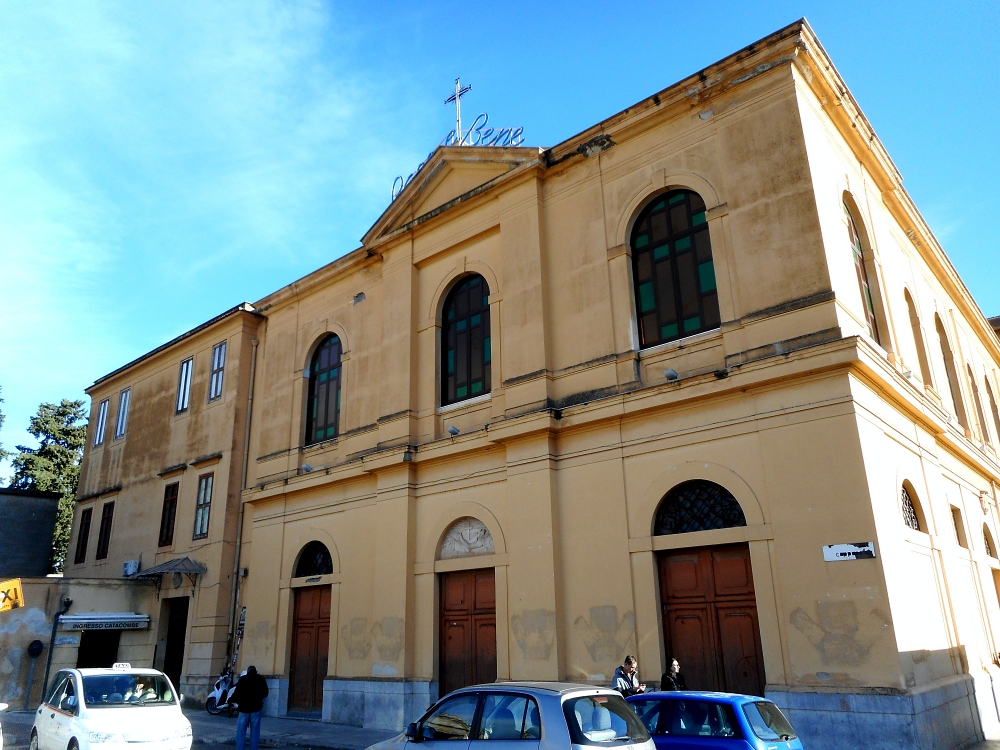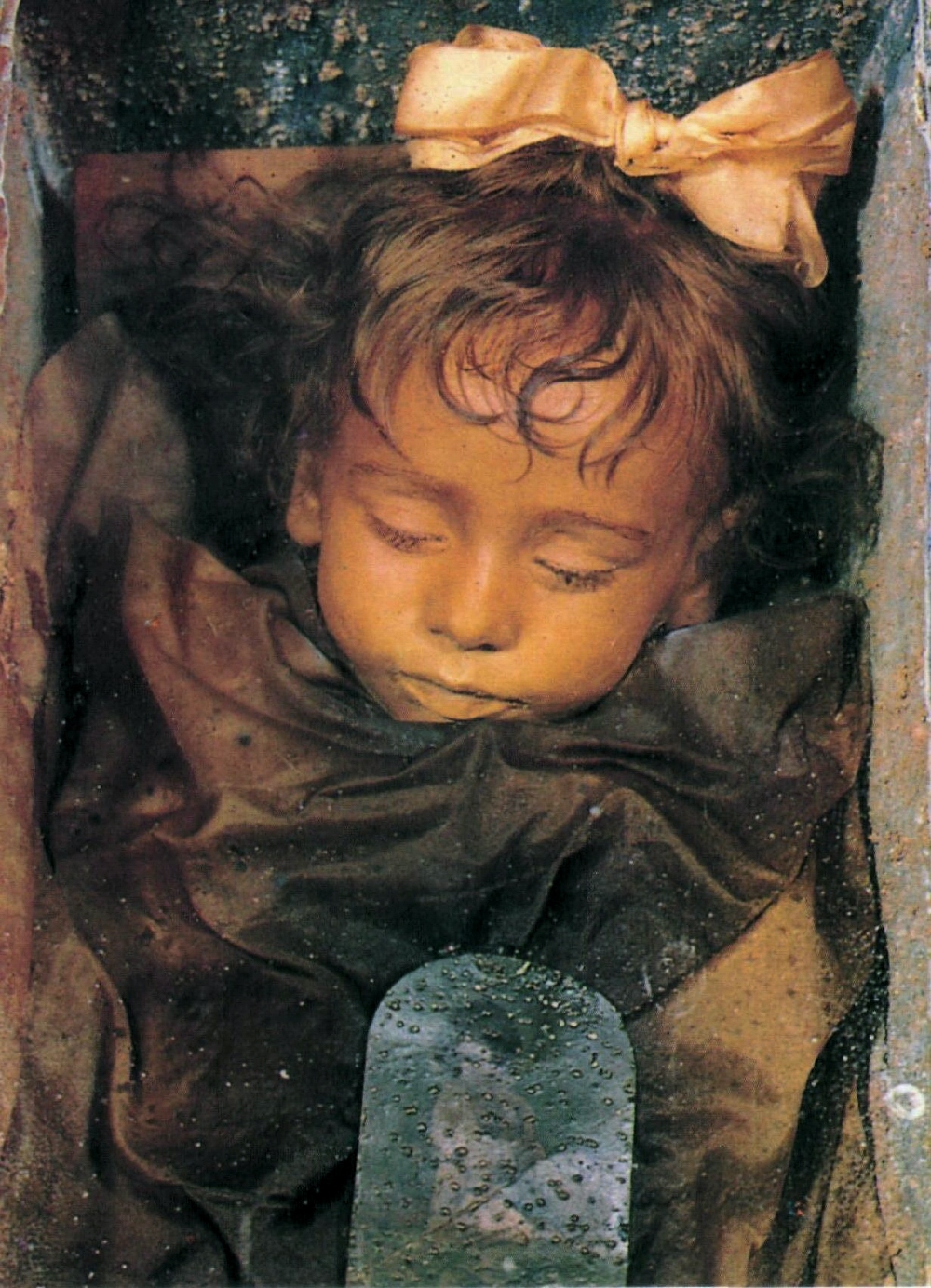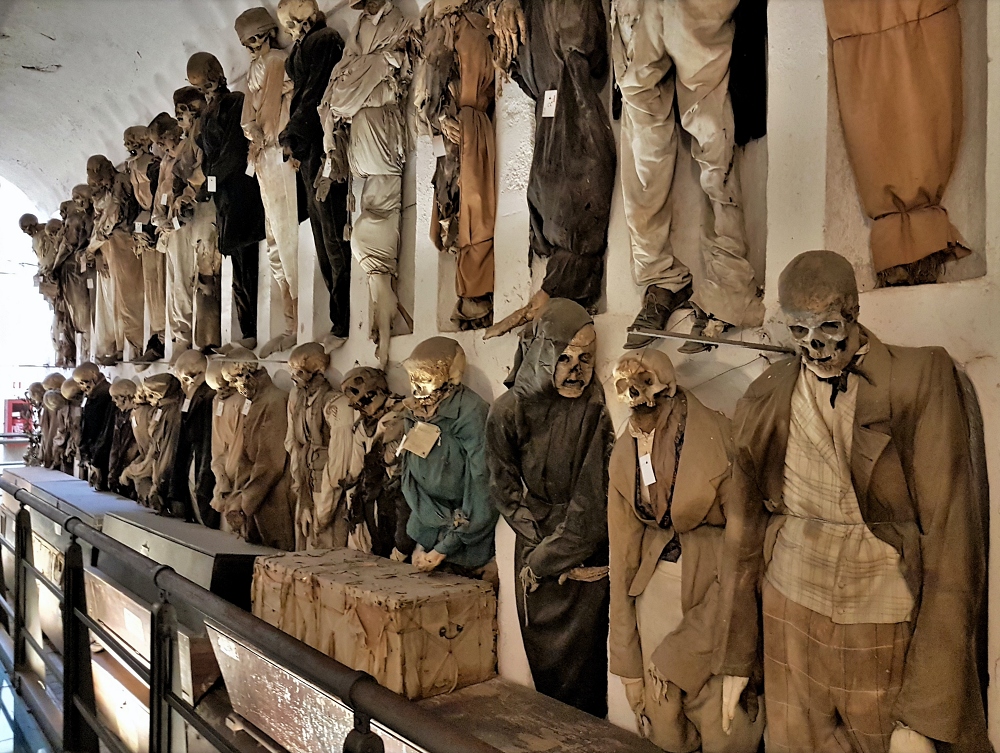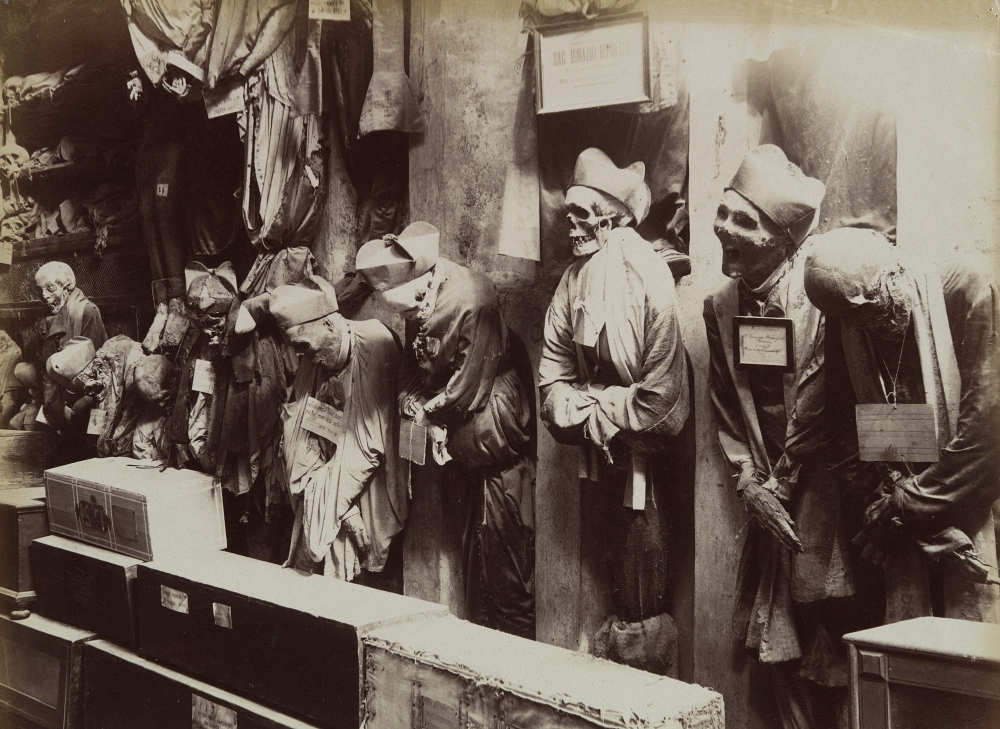New Research on the Child Mummies of Palermo
Why they were given these adult rites remains unknown.
For many people the catacombs of Europe are morbid tourist attractions, while others revere them as sites where martyrs and clergy are laid to rest in honor. Still another camp is concerned with who was selected to be placed in the catacombs and how they died. In Palermo, Sicily, in Italy the Convento dei Cappuccini monastery houses a set of underground catacombs with 1,284 mummified bodies and skeletal remains inside. In these tunnels many of the deceased are grouped by sex, profession, and age. There are even some children there, some of which have been mummified. A new study aims to understand how this kids died and why they were chosen to be mummified.

A new study, funded by the UK-based Arts and Humanities Research Council, aims to understand more about the child mummies of the catacombs. In the children’s wing of the vault there are only 40 children, but more than 160 in total are housed in the catacombs altogether.
One of the most well known of these child mummies is Rosalia Lombardo, who died in 1920 – just a week before her second birthday. Her corpse had been mummified and remains to this day in very good condition. However this study won’t include Rosalia as it will only focus on children who died between 1787 and 1880.

The study will use a portable X-ray machine to examine the child mummies and skeletons in a non-invasive way over the course of 2 years. 14 radiograph images will be taken of each child’s body by Dr. Dr Robert Loynes who has formerly worked on X-raying mummies in a similar fashion.
The principle investigator on the study, Dr. Kirsty Squires of Staffordshire University, told The Guardian that the study aims to “…better understand their development, health and identity, comparing the biological fundings with the more cultural kind of things: the way the individuals have been mummified and the clothes they are wearing as well.”

The children are suspected to have been from the upper classes since patrons and other wealthy people were often given crypt burials at churches, but why they were placed among adults remains a mystery.
Squires explained, “Given that this funerary rite was mainly reserved for adults, we want to understand why the children were mummified. We have a fairly good idea that they were from the upper ranks of society but we don’t know much more about juvenile health, development, or identity during this period.”

As part of the Juvenile Mummy Project the new research will seek to expand on any current knowledge of the children in this catacomb, as the only things recorded about them were their names and birth or death dates. Any descriptive information on their bodies was documented with paper tags, all of which are now decayed or gone.
Since the info has been now been lost to time, scientific research may be able to fill in some of the knowledge gaps. In particular the team aims to reveal the social status’ of the children and more information about how they lived.

The catacombs were built after a 16th century burial vault at the Santa Maria della Pace (originally intended only for friars) revealed naturally-preserved bodies whose faces were still recognizable years after death. The results were taken as a miracle of God and extensive catacombs were built to house more Catholic bodies. In 1787 it was proclaimed that any local could be buried there, not just the friars and clergymen.
SKM: below-content placeholderWhizzco for DOT

